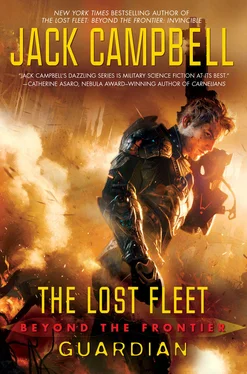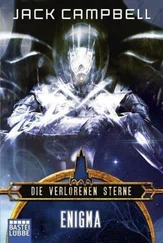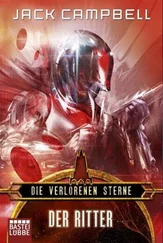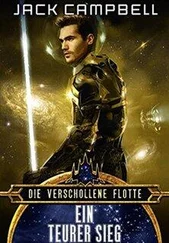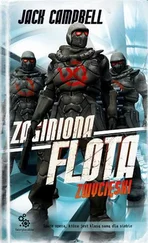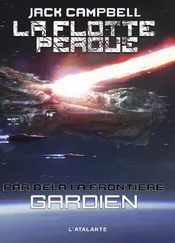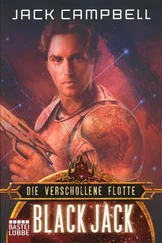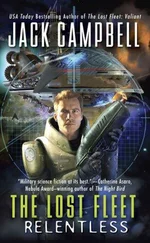“Who do they belong to?” Senator Suva demanded. “You should know that! How can you not know that?”
Geary sighed and rubbed his forehead with one hand. “Senator, wherever these ships came from is not anywhere that the Alliance has current information on.”
“Where would that be?”
“I think I know.” Everyone’s attention centered on Senator Sakai. “I have studied much history,” he said. “Including the period when humanity first left Sol. The ships from Sol went in all directions, but there were two main paths. One path led inward along the spiral arm of the galaxy in which we reside. That resulted in the colonies near Sol in that direction, then the Alliance, the other groupings of star systems such as the Callas Republic and the Rift Federation, and beyond that the Syndicate Worlds. The other path led outward along our arm of the galaxy. Some of the earliest human colonies sprang into existence there. Perhaps these ships come from stars on the other side of the expansion from the one we occupy.”
Geary tapped in the same queries that everyone else was, seeing an image of the galaxy appear near his display with human-occupied space highlighted upon it. The image gave him momentary pause. We think we’ve come so far. In human terms, we have. Hundreds of light-years. Unimaginable distances. But lay out the region of the galaxy that we have explored and occupied, and it is just a small piece of one portion of that galaxy, which itself is but one of countless other galaxies. I’m used to space being huge, but even for me it is impossible to grasp how HUGE the universe is.
Rione commented first. “I never realized how lopsided human expansion has been. In terms of stars and distance, the vast majority has been inward toward the center of the galaxy. We’ve spread up and down and inward. I always assumed we started expanding in those directions. But my data says we first started going outward.”
“Something stopped us,” Costa said, her voice suspicious. “More threats like the enigmas who stopped our expansion inward?”
“How could that secret have been kept for so long and so close to Old Earth?” Rione asked. “The Syndics kept knowledge of the enigmas from us for a century, but that was because their contact with the enigmas was in regions of space far from our own, and the war drastically limited communications.”
“And,” Charban added, “we had stopped looking for other intelligent species after so many stars and worlds had yielded none. In the early days of human expansion, we expected to encounter such beings at any time.”
Geary had his eyes on the increasingly detailed images that Dauntless ’s sensors were creating of the unknown warships. “They look human. The ships, I mean. We have some experience with nonhuman spacecraft designs. I don’t see anything on those warships that looks like the differences we saw on ships built by the enigmas or the Kicks or the Dancers.”
“What do I do?” Desjani asked him.
“Head for Old Earth,” Geary directed. “Transmit the standard arrival message to the Sol Star System authorities there. We’ll continue with our mission until something makes us do otherwise.”
Had one or more of the senators been ready to put their oar in? But none of them did, perhaps because none of them could think of any other useful form of action right now.
“Those may be human-built ships,” Desjani commented after adjusting the course of Dauntless slightly, “but look at all that extra junk on them. They look like something from one of those space fantasies. What do you call that stuff?”
Lieutenant Castries answered. “Frippery and furbelows, Captain. You’re right. Those ships look like the illustrations to a space fantasy with kings and princesses and wizards. They’re crawling with decorative detail. The ship’s systems are trying to analyze the purposes of those features, but I don’t think they have any other purpose but decoration.”
“Is that why the fins on those ships are so big?” Lieutenant Yuon asked. “They’ve got a lot more height than should be required for sensors and shield generators.”
Desjani raised an eyebrow toward Castries. “You read space fantasy, Lieutenant?”
“Not… much… lately, Captain. I mean, yes, Captain.”
“Everyone needs some romance,” Geary said, while Lieutenant Castries acted as if she were suddenly absorbed in analyzing sensor readings.
“Oh, please.” Desjani rolled her eyes. “One of those stories where the beautiful, brainy princess wakes the sleeping Black Jack with a kiss so that together they can overthrow the evil star demon and live happily ever after?”
Geary realized his mouth was hanging open and shut it hastily. “Tell me that you’re kidding.”
“Nope. Lieutenant Castries?”
“Those are usually pretty good,” the hapless Lieutenant admitted. “They don’t get you right, Admiral, of course.”
“Would you like to see some of the illustrations for those?” Desjani asked.
“No, I would not. If I may get back to the situation we’re facing, you’re telling me these outer-star ships are extensively ornamented, and not for any useful purpose.”
Lieutenant Iger, who had still been listening but wisely refraining from commenting up until now, nodded. “It might not impact their fighting capabilities, Admiral, but it does indicate they have the luxury of investing resources into nonfunctional ornamentation.”
Rione shook her head. “I have seen a great deal of nonfunctional ornamentation in my time, and I can say with certainty that not all of it was purchased because the person doing the buying could afford it. We may be dealing with status, appearance, and other issues that have little to do with simple monetary calculations.”
Lieutenant Castries spoke up again, sounding excited. “Captain, I asked our systems to evaluate the fins on those ships, adding in variables for nonfunctionality. When asked to do that, our systems have evaluated a high probability that the fins were designed for form rather than strength.”
“Ostentation?” Senator Suva asked. “Display? Are we certain these are warships?”
“We have identified some weapons,” Lieutenant Iger said. “Not too many, yet, but the ships are definitely armed.”
Charban was shaking his head, mouth pursed. “Speaking as an outside observer, I have seen a lot of ships. I have never seen any that look like that which weren’t warships.”
“Common design ancestry,” Senator Sakai said. “That is what our systems analyzed, is it not? These ships came from the same sources as the one we are aboard. We can reasonably estimate function from appearance.”
“They’ve finally seen us,” Lieutenant Yuon reported. “They’re altering vectors.”
Geary watched his display as the unknown warships turned inward toward Sol and began accelerating. “They’re coming our way but not directly at us.”
“Look at their vector. They first want to block our direct path back to the hypernet gate,” Desjani said. “Wait and see. Whoever they are, they are moving to block our access to the hypernet gate. That is not a friendly act.”
“Maybe they—” Suva stopped speaking, then shook her head. “It does look as if they’re trying to keep us from leaving before warning us off, if that’s what they intend.”
“They’re trying to trap us?” Costa demanded.
Geary looked to Rione and Charban. “Please tell the Dancers we would like them to stay close to us. If they ask about the other warships, tell them we’re trying to figure out who they are and what they want.”
“You make telling them that sound so simple,” Rione commented sarcastically. “We will try our best.”
Читать дальше
Конец ознакомительного отрывка
Купить книгу
